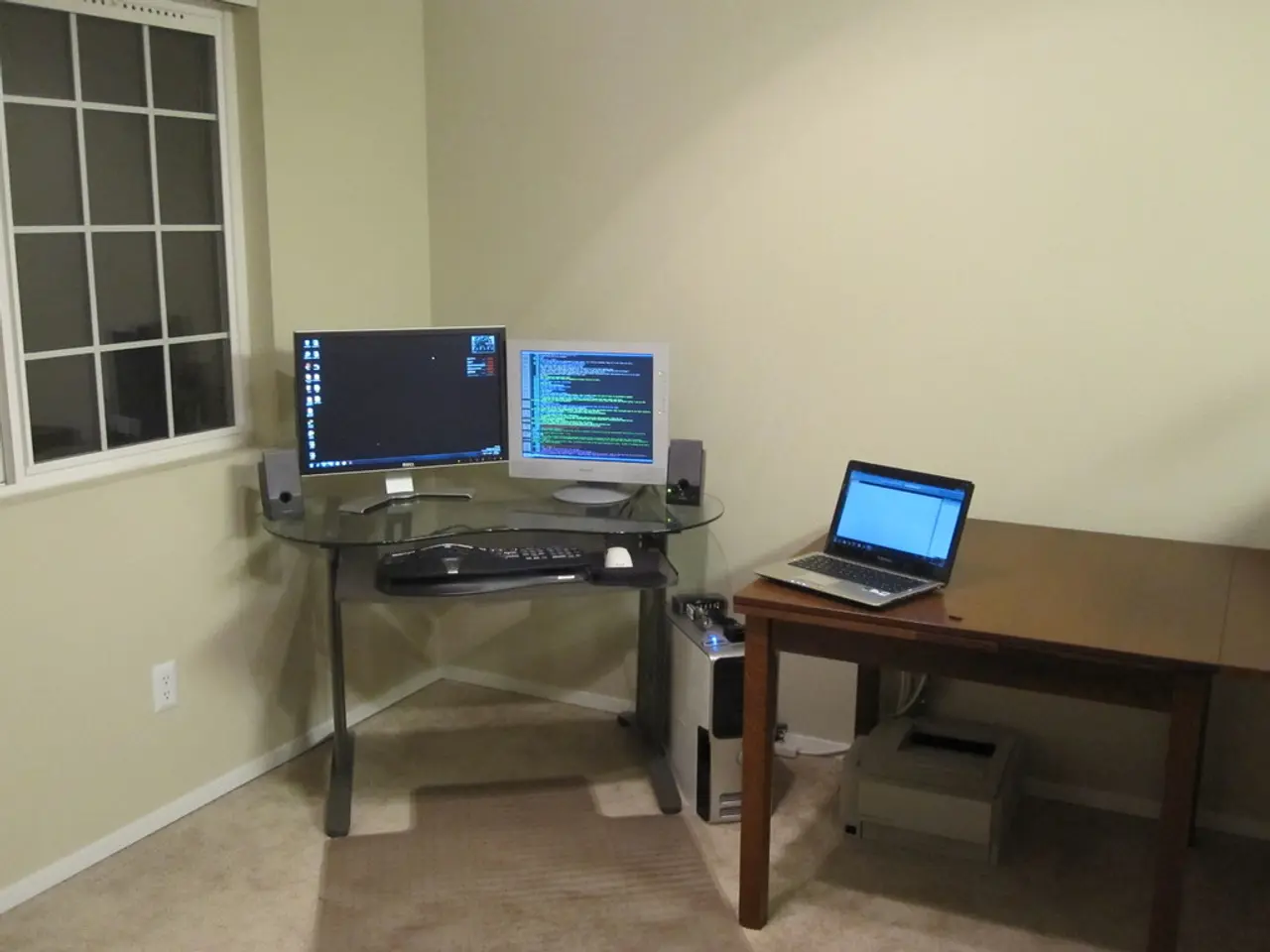Windows 11 Update 24H2: Advancing Stability, Artificial Intelligence, and Future-Proofing Ahead
Windows 11 version 24H2 brings a host of significant features and improvements, focusing on AI integration, productivity enhancements, system stability, and networking.
AI Integration
For devices equipped with Neural Processing Units (NPUs), 24H2 unlocks advanced AI capabilities. Windows Recall, an AI-powered search feature, and the "Click to Do" overlay, which surfaces actionable options, are key examples. The AI agent is integrated into the Settings app, requiring hardware with 40+ TOPS, such as Qualcomm Snapdragon X Plus/Elite and certain Intel/AMD CPUs. BitLocker and Windows Hello activation are necessary to enable these AI features. AI upscaling in gaming also enhances visual fidelity without performance loss on Copilot+ PCs [1][3][4].
Productivity Enhancements
File Explorer has seen significant improvements, supporting native creation of 7z and TAR archives, tabbed views for recent/favorite/shared files, and refined context menus. The Start menu now includes a panel for phone battery status, notifications, and recent photos for better PC-mobile integration. Snap Layouts and Snap Groups have been enhanced for superior multitasking. New features in Paint and Snipping Tool, like Generative Erase and Copy as Table, further boost productivity [1][4][5].
System Stability and Performance
24H2 introduces Quick Machine Recovery, a fast rollback system to a stable state after critical kernel errors, significantly reducing downtime. Power management is improved with revised scheduler heuristics and updated chipset drivers, boosting multi-core processor efficiency and extending laptop battery life by about 5%. System telemetry and health service overheads are reduced by roughly 10%, enhancing resource availability for apps. The update focuses on backend stability and driver management while keeping the UI visually stable [2][3].
Networking Enhancements
Support for Wi-Fi 7 technology is introduced, promising faster wireless internet speeds. Bluetooth LE Audio support improves wireless audio quality and efficiency [1].
Other notable features include folder-level encryption, a 24% reduction in unexpected system reboots, driverless printing mode via Mopria, Wi-Fi 7 (802.11be) support, improvements in the classic Blue Screen of Death, and the new Energy Saver mode, which works across both laptops and desktops [6][7].
In summary, Windows 11 24H2 combines advanced AI functionalities (especially on AI-capable hardware) with practical productivity tools, robust system recoveries, and cutting-edge wireless networking standards to deliver a more efficient, stable, and intelligent user experience.
[1] Microsoft (2022). Windows 11 24H2: What's New
[2] Windows Central (2022). Windows 11 24H2: Everything you need to know
[3] TechRadar (2022). Windows 11 24H2: Release date, features, and more
[4] Tom's Hardware (2022). Windows 11 24H2: What's New for Gamers
[5] PCWorld (2022). Windows 11 24H2: Everything you need to know
[6] The Verge (2022). Microsoft adds folder-level encryption to Windows 11
[7] ZDNet (2022). Microsoft's Windows 11 24H2 update: What you need to know
- The AI agent is integrated into the Settings app to provide advanced features, but the AI capabilities are only accessible on devices with hardware that meets the requirement of 40+ TOPS, such as Qualcomm Snapdragon X Plus/Elite and certain Intel/AMD CPUs.
- Windows 11 version 24H2 supports cloud technology by introducing folder-level encryption, which adds a layer of security to user data.
- The network management in Windows 11 24H2 has been upgraded to support Wi-Fi 7 technology for faster wireless internet speeds and Bluetooth LE Audio for improved wireless audio quality.
- In terms of productivity, the update enhances the File Explorer, Start menu, Snap Layouts, Snap Groups, Paint, and Snipping Tool to boost user productivity.
- Microsoft's Windows 11 24H2 update focuses on technology advancements in AI, networking, and productivity, aiming to deliver a more efficient, stable, and intelligent user experience, while also improving system stability and performance with features like Quick Machine Recovery and power management enhancements.







